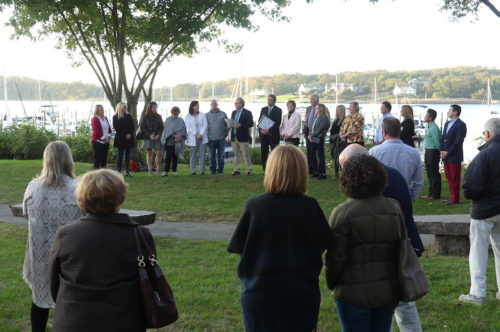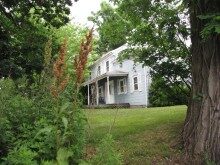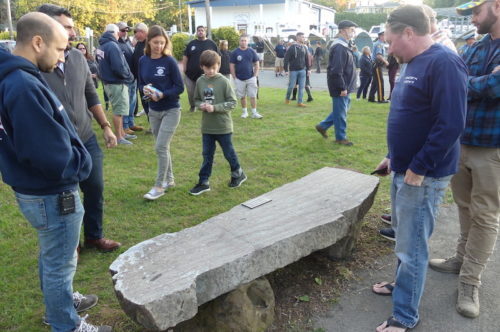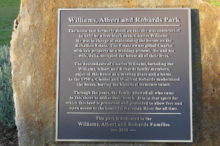
By JOHN T. WARD

Dubbed “Williams, Albert and Robards Park” for the successive generations of the family that lived there, the site at the northern end of Denormandie Avenue will now serve as a place for “contemplation,” Mayor Ben Lucarelli told several dozen onlookers at a brief ceremony.


Though a weathered medallion on the doorframe marked the structure as a Century House, borough officials said the house was not historically significant, and too costly to restore. It was demolished in 2015.
The remaining 320-foot-deep lot is now a passive park with four benches dedicated to deceased community members, including police officer Robert Henne Jr. and councilman Jerome Koch.
Councilwoman Betsy Koch, who followed her late husband onto the governing body three years after his death in a cycling accident, called the park “just spectacular” during the council’s regular meeting Tuesday night.
The benches overlook the 140-foot frontage on the Navesink River, where the American Littoral Society plans to create a living shoreline next spring, Lucarelli said.
According to Councilman Chris Rodriguez, the property is also home to Monmouth County’s oldest and largest yew tree.
The borough’s success in acquiring and converting the site to parkland “would not have been possible” without the leadership of former mayor Mike Halfacre, Lucarelli said at the borough council meeting Tuesday evening.
More than $1 million of the cost was covered by grants from the state of New Jersey, Monmouth County and the private Monmouth Conservation Foundation, said Lucarelli.





















